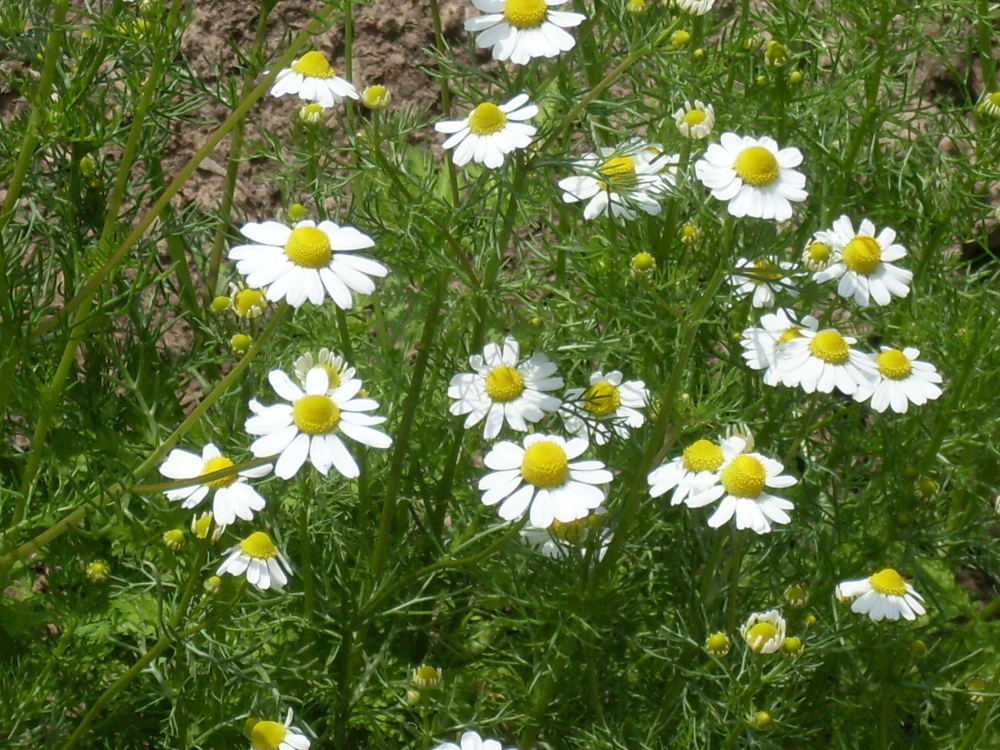Chamomile (Matricaria recutita)

Also Known as: German Chamomile
Uses: Tea, Herb Pillows, Potpourri, Salves
Parts Used: Flowers
Chamomile is an ancient medicinal herb, used for thousands of years to calm anxiety, settle stomachs, reduce fevers and inflammation, treat children’s illnesses and skin disorders. Extensive scientific research has confirmed many of the therapeutic properties of Chamomile – sedative, anti-inflammatory, anti-bacterial, muscle relaxant, antispasmodic, anti-allergenic - and today it is included as a drug in the pharmacopoeia of 26 countries.
Those with allergies to plants in the Compositae family – asters, daisies, celery, ragweed, marigolds, or chrysanthemums, may develop an allergic reaction to Chamomile. You will find Chamomile in our Tranquili-Tea and Chamomile Lavender Blends.
Garden tips:
German Chamomile is easy to grow from seed, and can be directly-sown in the garden or field. Keeping tiny seeds moist for germination can be very difficult, so try starting plants indoors and transplant after frost danger has passed. Allow 3-5 weeks before transplanting outdoors. Space 10 inches apart.
Chamomile likes full sun to part shade and grows best in well drained soil.
Harvest during blooming season, hand pick flowers or use a Chamomile rake (a special tool).
Chamomile tea can be sprayed on propagation flats to prevent damping off, (a fungus that attackes seedlings). I have had great success with this on all my seedlings. It is also believed to increase the aborption of calcium when added to compost piles.
Chamomile attracts bees, butterflies, birds and has fragrant blossoms. It is also a good companion plant for basil, onions, cabbage and cucumbers, as well as increasing the essential oil production of many other herbs it is planted near.
For educational purposes only. This information has not been evaluated by the FDA. This is not intended to diagnose, treat, cure or prevent any disease.

Follow us